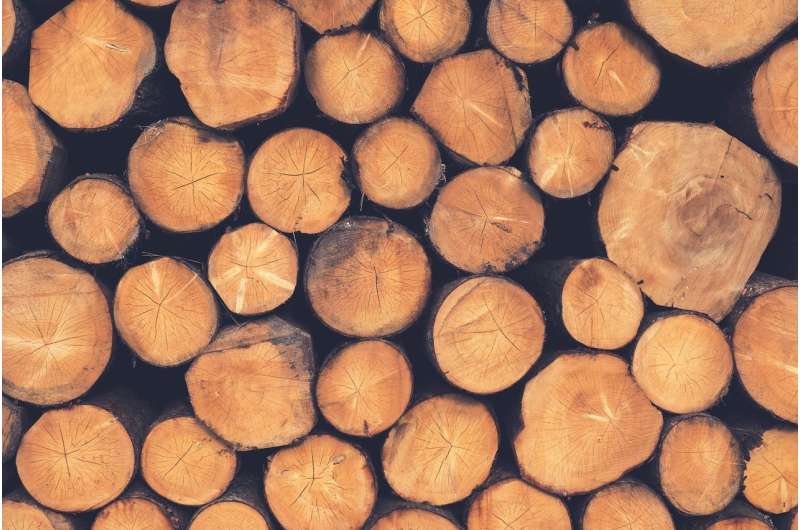Building a high rise out of wood? Cross-laminated timber could make it possible
A new study finds that adopting cross-laminated timber as a primary construction material could have significant environmental benefits, from carbon storage to global reforestation and increased forest cover.
Cross-laminated timber (CLT) is created by stacking multiple layers of timber and then adhering the layers together. This results in strong, light wooden panels up to 60 feet long, big enough to form an entire wall or other structures. These panels are also fire-resistant. When exposed to fire, the outer layer of a CLT panel turns to char, which seals the rest of the wood away and prevents it from igniting.
Because CLT is such a promising construction material, researchers wanted to determine the effects of adopting it more broadly. To do this, they combined an environmental assessment tool known as a life cycle assessment (LCA), which tracks the environmental effects of a product throughout its life cycle, with the Global Timber Model (GTM), an economic model which examines the effects of land use and policy on the global timber market.
The addition of the LCA set the study apart from prior research, said Kai Lan, lead author and assistant professor in the North Carolina State University College of Natural Resources. The research is published in the journal Nature Communications.
“The LCA tracks the environmental impact of the product from the raw material stage all the way to transportation, manufacturing, use phase and end of life,” Lan said. “We decided to combine these two tools because traditional research only examines these products at certain stages of their lifecycle, not the entire process.”

Researchers integrated data from the two tools to predict the economic and environmental impacts of a broad move toward CLT in construction globally. They found that a move to CLT would increase forest cover worldwide, as the production of CLT would necessitate larger and more intensely managed forests to supply raw timber. While a small portion of natural forest would need to be converted, the increase in managed forests and plantation land could lead to an overall increase in forest area of nearly 30 million hectares globally by 2100.
These increases are not uniform, however. Places like the United States and western Europe would see large increases in forestland, but tropical areas near the equator would see reductions specifically in natural forests.
Economically, the GTM showed that increased demand for CLT results in an increase in timber prices, as projected forest cover increases only add around 11% to the global wood supply even in the most aggressive adoption scenario. This leads to a 26.3% increase in sawtimber prices and a 25.9% increase in pulpwood prices by 2100, compared to no CLT adoption. Sawtimber is used to make traditional wood products like plywood, lumber and wood panels, while pulpwood is used in paper products.
Increasing forest cover also carries significant benefits for carbon sequestration, as both the CLT itself and the forests needed to create it store carbon. Depending on how quickly the global market adopts CLT, researchers predict that CLT demand would increase the amount of carbon stored on land by 20.3–25.2 gigatons (carbon dioxide equivalent) by 2100. This effect is amplified by lowering demand for traditional construction materials like steel and concrete caused by an increase in CLT demand.
“When we increase usage of CLT, we decrease demand for those traditional construction materials. When you use less traditional materials, you emit less greenhouse gases while creating those materials,” Lan said. “All of these effects combine over the entire lifecycle of the CLT to create the environmental benefits.”
More information:
Kai Lan et al, Global land and carbon consequences of mass timber products, Nature Communications (2025). DOI: 10.1038/s41467-025-60245-y
North Carolina State University
Citation:
Building a high rise out of wood? Cross-laminated timber could make it possible (2025, July 28)
retrieved 29 July 2025
from https://techxplore.com/news/2025-07-high-wood-laminated-timber.html
This document is subject to copyright. Apart from any fair dealing for the purpose of private study or research, no
part may be reproduced without the written permission. The content is provided for information purposes only.

Comments are closed